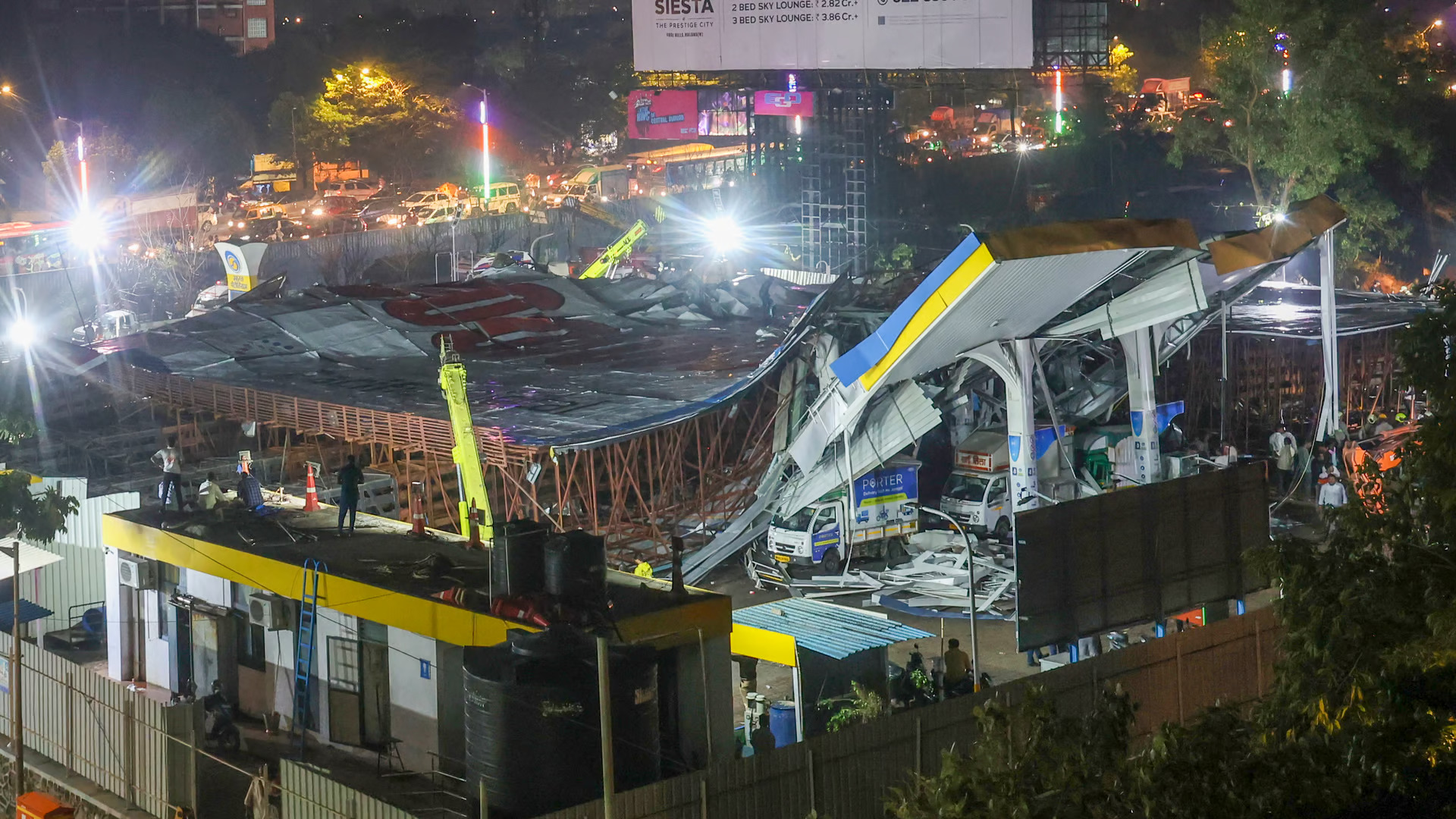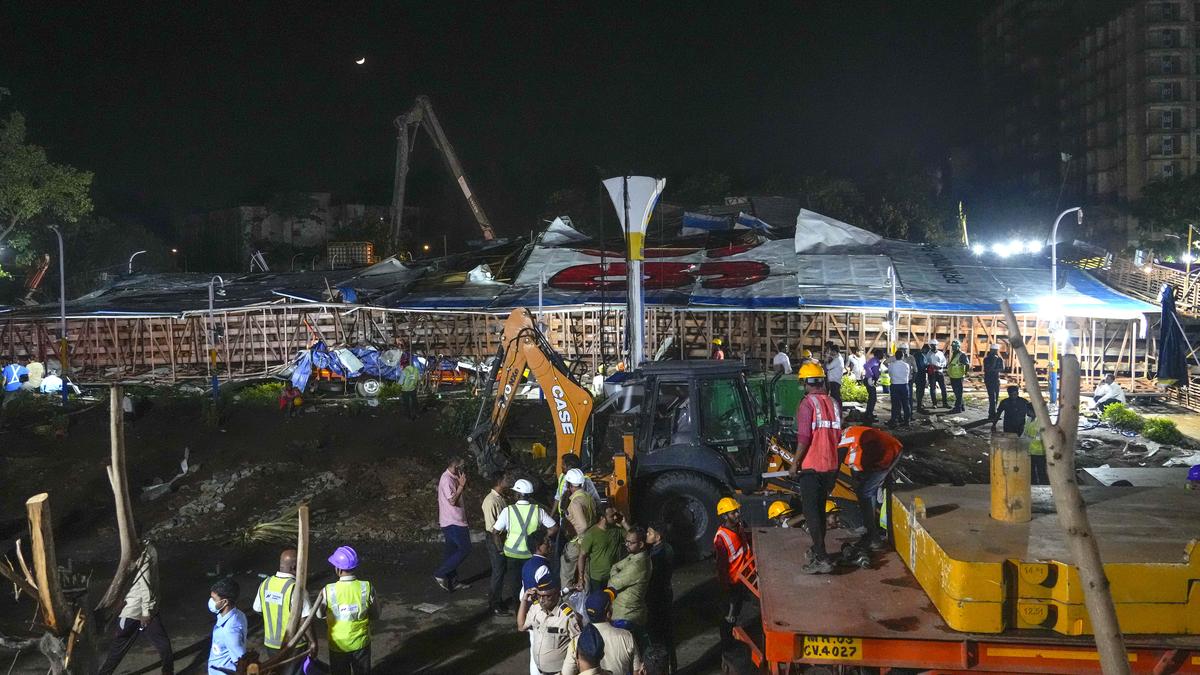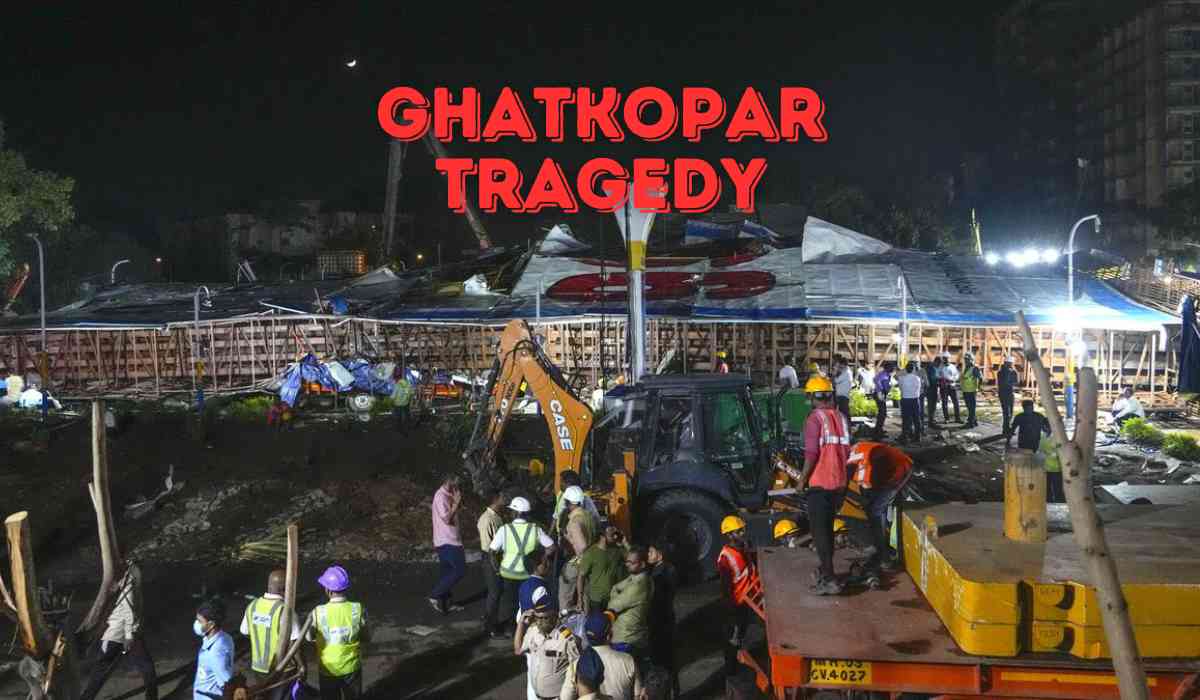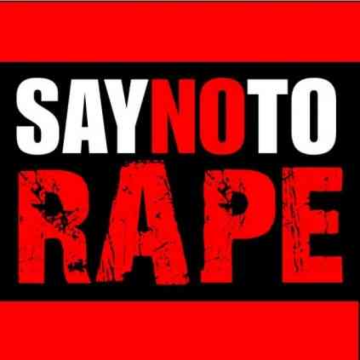The tragic collapse of a billboard in the Ghatkopar region of Mumbai, which left 16 people dead and 75 injured, has highlighted the serious repercussions of advertising sector irresponsibility. Bhavesh Bhinde, the proprietor of Ego Media Pvt. Ltd., the organisation in charge of the disastrous hoarding, is at the centre of this catastrophe. Bhinde was captured in Udaipur following a three-day manhunt that involved three different states.
_1715938587.png)
Bhavesh Bhinde marked in red
The Incident
The 120-by-120-foot billboard collapsed catastrophically due to high winds and unusually heavy rain. It happened on Monday night when the enormous building crashed into a nearby petrol station. According to the National Disaster Response Force (NDRF), rescue efforts were completed by Thursday AM as a result of the emergency services' and law enforcement's quick response.
For more on this, read: Mumbai Hoarding Collapse Top Updates: 14 Dead, And 74 Injured
The Manhunt
Realising the imminent threat of arrest, Bhinde fled Mumbai with his driver. His escape route included Lonavala, Thane, and Ahmedabad before he was finally apprehended in Udaipur. Bhinde evaded capture by frequently changing locations and assuming a false identity. The Mumbai Police Crime Branch deployed eight teams to track him down, culminating in his discreet arrest without the knowledge of local Udaipur authorities.

Bhavesh Bhinde: A Background
Bhinde, 51, hails from Mulund West, Mumbai. He began his career in the advertising industry on Grant Road and eventually founded his own company, Guju Ads, in 1999. His ambition and networking skills allowed him to expand rapidly, securing over 500 hoardings across Mumbai, primarily on leased railway and civic properties. Despite his business success, Bhinde faced numerous legal challenges, including being blacklisted by the railway administration in 2018 due to alleged violations.

The Aftermath
The Mumbai hoarding collapse has underscored severe regulatory lapses in the city's oversight of advertising structures. The illegal billboard was installed on land managed by the Government Railway Police (GRP), raising questions about compliance and enforcement. This incident is not isolated; similar tragedies have prompted calls for stricter safety standards and regular structural audits to prevent future occurrences.
Regulatory and Safety Concerns
Following the incident, PCMC and other municipal bodies have initiated comprehensive surveys and structural audits of hoardings across their jurisdictions. Municipal Commissioner Shekhar Singh stated that action against illegal structures would commence immediately, reflecting the urgency of ensuring public safety.

Legal and policy implications
Bhinde's arrest and the subsequent investigation could lead to significant changes in how advertising structures are regulated. Demands for strict adherence to safety regulations and penalties for non-compliance are rising. Policymakers may decide to review and strengthen the laws governing outdoor advertising in response to this incidence.

Conclusion
The Ghatkopar hoarding collapse is a tragic reminder of the critical need for diligent oversight and regulation in the advertising industry. Bhavesh Bhinde's arrest marks a step towards accountability, but the broader systemic issues must be addressed to prevent such disasters in the future. Public safety should be paramount, and this incident could serve as a catalyst for much-needed reform in urban infrastructure management.
Media inputs : multiple sources, Vygr (X)
ⒸCopyright 2024. All Rights Reserved Powered by Vygr Media.























